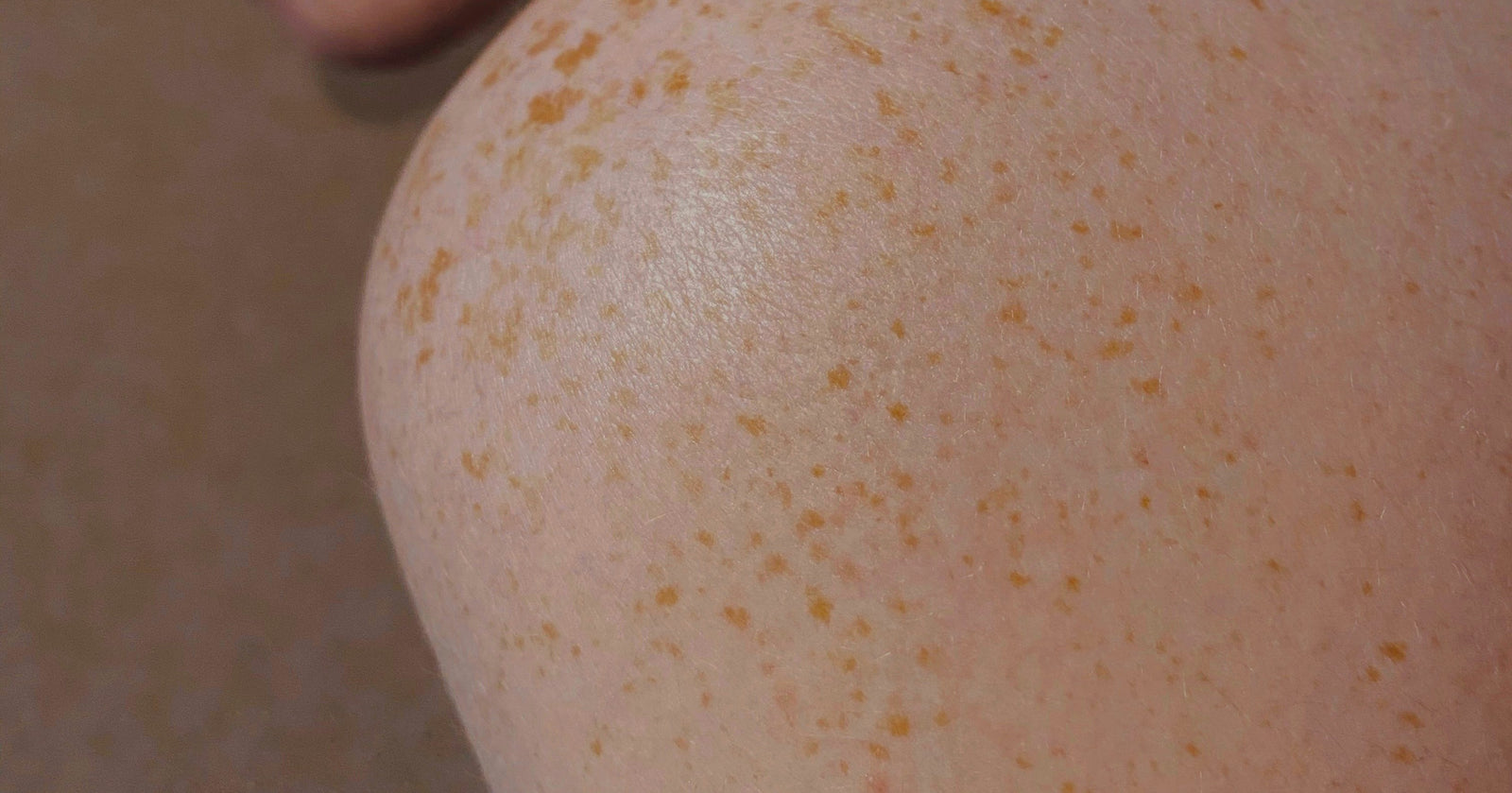STRUCTURE AND FUNCTION OF THE SKIN BARRIER
Our skin serves many vital functions, allowing us to respond to our environment, regulate our body temperature, and even convey our mental and physical health status. Below, we deep dive into the physiology, structure, and function of the skin barrier to better understand how to properly use skin care to enhance skin health.
STRUCTURE
The skin barrier is a complex system composed of 3 main layers, the epidermis being the most commonly studied and talked about since most skin care affects this layer of the skin [1].
- Epidermis: outermost layer with 4 sub-layers [2,3]:
- Stratum corneum (SC): composed mostly of dead keratinocytes (called corneocytes) tightly linked together through lipid and keratin/filaggrin matrix; forms a tight outer barrier with low (acidic) pH that prevents water loss and functions as a protective and dynamic biosensor of the outside environment [4].
- Stratum granulosum (granular cell layer): responsible for release of glycolipids that continue to the surface and serve as glue at the SC. Keratinocytes begin to die off, a natural maturation process where they lose their organelles and begin to aggregate into a stronger layer [5].
- Stratum spinosum (squamous cell layer): made of young keratinocytes and dendritic cells (called Langerhans cells), immune cells within the skin barrier [6].
- Stratum basale (basal cell layer): source of young keratinocytes that eventually mature into protective corneocytes of the SC. Also contains melanocytes that produce pigment that gives skin its color, whether genetically or in response to UV exposure.
- Dermis: middle skin layer composed mostly of fibroblasts that produce collagen and elastin. This layer contains many nerve endings, hair follicles, sweat glands, and blood vessels, allowing us to sense and control our body temperature and respond to sensory stimuli like touch, temperature, or pain [7].
- Hypodermis: separates dermis from internal organs and consists mostly of adipose (fat) tissue that serves to insulate the body. This layer blends into the dermis and is also highly vascularized, acting as an intermediary between the blood and the outer layers of the skin [8].
SUPPORTING MOLECULES AND ORGANISMS
In addition to uncovering the structure of the skin barrier, researchers have identified additional chemicals and organisms that support the function of the skin [4]. These include:
- Lipids:
- Found within the stratum corneum
- Composed of lipids such as ceramides, cholesterol, and fatty acids
- Forms a hydrophobic barrier that prevents water loss and penetration of pathogens
- Natural Moisturizing Factors (NMF)
- Present in the stratum corneum
- Comprised of substances like amino acids, urea, and lactate
- Helps maintain skin hydration by attracting and retaining water molecules
- Microbiome
- The diverse community of microorganisms residing on the skin
- Plays a crucial role in maintaining the skin barrier's integrity and immune function
- Imbalance in the microbiome can lead to various skin conditions
FUNCTION
- Protection
- Shields the body from environmental aggressors such as UV radiation, pollutants, and microbes.
- Prevents dehydration by minimizing water loss through the skin.
- Immune Defense
- Acts as a physical barrier to pathogens, preventing their entry into the body.
- Houses immune cells that detect and neutralize invading microorganisms.
- Sensory Perception
- Contains sensory receptors that detect touch, pressure, temperature, and pain.
- Facilitates interactions with the external environment.
- Thermoregulation
- Regulates body temperature by sweating and dilating or constricting blood vessels.
- Controls vitamin D synthesis, essential for bone health and immune function.
IMPORTANCE OF MAINTAINING A HEALTHY SKIN BARRIER
- Prevents Skin Conditions
- A compromised skin barrier is associated with conditions like eczema, psoriasis, and acne.
- Proper skincare practices help strengthen the barrier, reducing the risk of these conditions.
- Promotes Overall Health
- A healthy skin barrier contributes to overall well-being by protecting against infections and environmental damage.
- Enhances self-esteem and confidence by maintaining skin appearance and function.
The skin barrier is a remarkable defense system that protects the body from external threats while maintaining essential functions. By understanding its structure, functions, and importance, individuals can implement effective skincare routines to nurture and preserve this vital barrier, promoting skin health and overall well-being.
Sources:
[1] Haftek M, Roy DC, Liao I-C (2021) ARTICLE: Evolution of Skin Barrier Science for Healthy and Compromised Skin.J Drugs Dermatol 20, s3–s9.
[2] Yousef H, Alhajj M, Sharma S (2024) Anatomy, Skin (Integument), Epidermis. InStatPearls StatPearls Publishing, Treasure Island (FL).
[3] Wickett RR, Visscher MO (2006) Structure and function of the epidermal barrier.American Journal of Infection Control 34, S98–S110.
[4] Rajkumar J, Chandan N, Lio P, Shi V (2023) The Skin Barrier and Moisturization: Function, Disruption, and Mechanisms of Repair.Skin Pharmacology and Physiology 36, 174–185.
[5] Biga LM, Bronson S, Dawson S, Harwell A, Hopkins R, Kaufmann J, LeMaster M, Matern P, Morrison-Graham K, Oja K, Quick D, Runyeon J, Oeru O, OpenStax (2019) 5.1 Layers of the Skin.
[6] Scheib N, Tiemann J, Becker C, Probst HC, Raker VK, Steinbrink K (2022) The Dendritic Cell Dilemma in the Skin: Between Tolerance and Immunity.Front Immunol 13,.
[7] Brown TM, Krishnamurthy K (2024) Histology, Dermis. InStatPearls StatPearls Publishing, Treasure Island (FL).
[8] Arda O, Göksügür N, Tüzün Y (2014) Basic histological structure and functions of facial skin.Clinics in Dermatology 32, 3–13.
